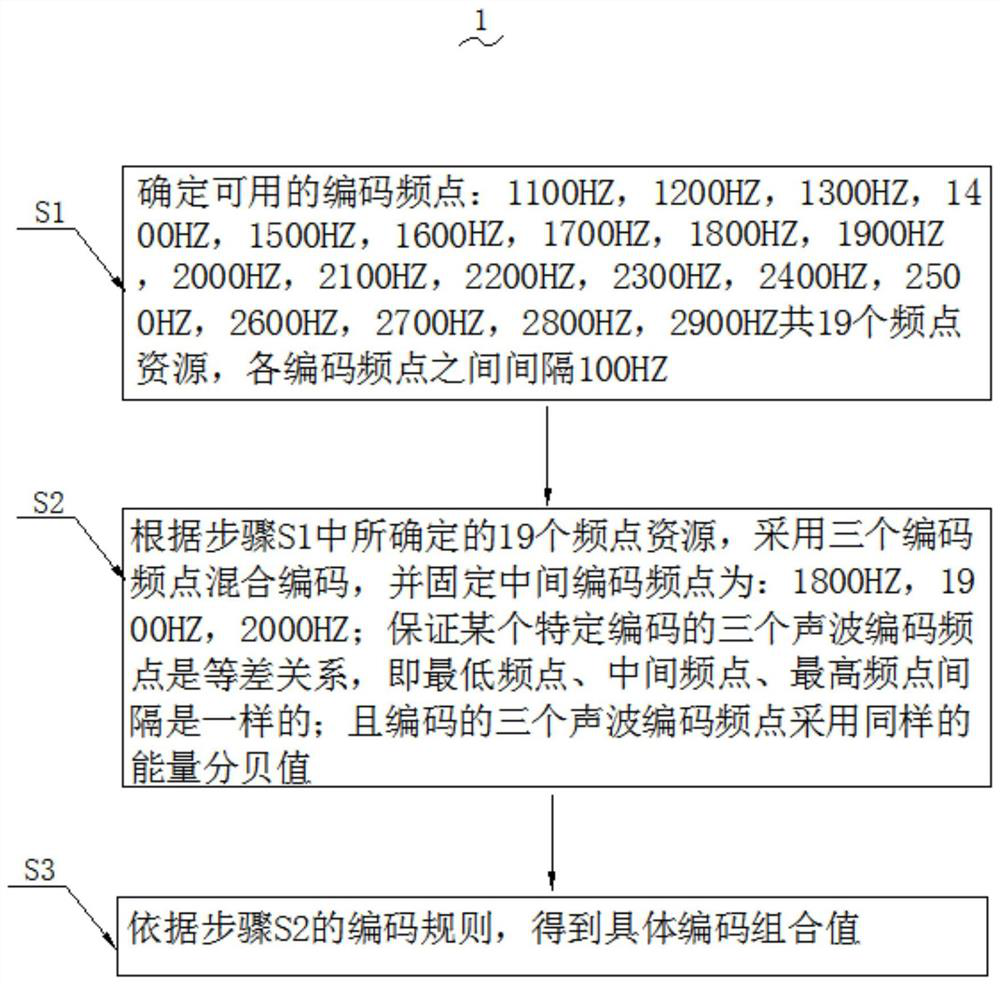An anti-interference coding method for low-frequency acoustic wave communication data transmission
A technology of sound wave communication and data transmission, which is applied in the field of coding algorithms and can solve problems such as being susceptible to interference, low frequency, and susceptible to interference
- Summary
- Abstract
- Description
- Claims
- Application Information
AI Technical Summary
Problems solved by technology
Method used
Image
Examples
Embodiment Construction
[0030] In order to make the object, technical solution and advantages of the present invention clearer, the present invention will be further described in detail below in conjunction with the accompanying drawings and embodiments. It should be understood that the specific embodiments described here are only used to explain the present invention, not to limit the present invention.
[0031] see figure 1 , a kind of anti-jamming coding algorithm 1 of low-frequency band acoustic wave communication data transmission of the present invention comprises the following steps,
[0032] S1: Determine the available encoding frequency points: 1100HZ, 1200HZ, 1300HZ, 1400HZ, 1500HZ, 1600HZ, 1700HZ, 1800HZ, 1900HZ, 2000HZ, 2100HZ, 2200HZ, 2300HZ, 2400HZ, 2500HZ, 2600HZ, 2890 in total Point resources, the interval between each coding frequency point is 100HZ;
[0033] S2: According to the 19 frequency point resources determined in step S1, use three coding frequency points for mixed coding,...
PUM
 Login to View More
Login to View More Abstract
Description
Claims
Application Information
 Login to View More
Login to View More - R&D
- Intellectual Property
- Life Sciences
- Materials
- Tech Scout
- Unparalleled Data Quality
- Higher Quality Content
- 60% Fewer Hallucinations
Browse by: Latest US Patents, China's latest patents, Technical Efficacy Thesaurus, Application Domain, Technology Topic, Popular Technical Reports.
© 2025 PatSnap. All rights reserved.Legal|Privacy policy|Modern Slavery Act Transparency Statement|Sitemap|About US| Contact US: help@patsnap.com

